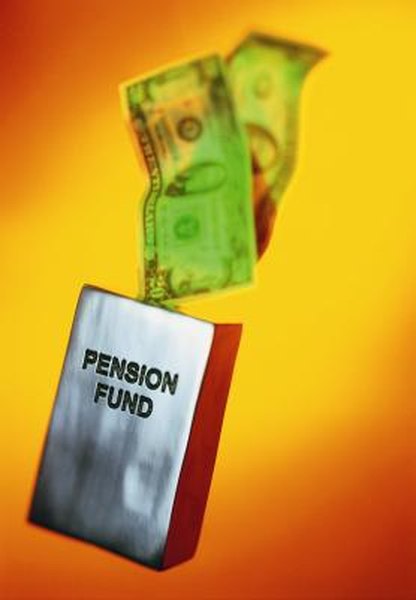Terminating vs. Freezing a Pension Plan
Participants have specific rights when a pension plan is frozen or terminated.
Photodisc/Photodisc/Getty Images
Many employers offer pension plans to encourage employees to save for retirement. Defined benefit plans are funded solely by the employer, while defined contribution plans allow employees to grow their nest egg through payroll deductions. Maintaining these types of plans can be costly, and in some cases, an employer may choose to terminate or freeze its pension plan. Terminating or freezing a plan can have a significant impact on your retirement savings strategy.
Defined Benefit Plan Terminations
Employers that offer a defined benefit plan can end a pension plan by applying for a standard termination or a distress termination with the Pension Benefit Guaranty Corp. With a standard termination, your employer has the option of transferring your accrued benefits into an annuity or giving you a lump-sum distribution. If the company doesn't have enough money to pay out employee benefits, it can opt for a distress termination instead. If a distress termination is granted, the PBGC takes over the plan and is responsible for paying plan benefits up to a certain limit.
Defined Contribution Plan Terminations
Defined contribution plans -- such as 401(k), 403(b) or profit-sharing plans -- can be terminated at any time and for any reason. Typically, these types of plans require you to be vested for a certain number of years before you can gain access to all the money in your account. When a defined contribution plan is terminated, you automatically become 100 percent vested with regard to your individual contributions and any money your employer has kicked in. Depending on the plan, your employer may offer to complete a direct rollover to another qualified retirement account or offer you a lump-sum payout.
Pension Plan Freezes
When a pension plan is terminated, the plan is disbanded completely. When a pension is frozen, it remains intact but no new contributions are allowed. Typically, a freeze applies only to defined benefit plans and can be either hard or soft. A hard freeze means that you won't lose any of your existing benefits but you also won't earn any new benefits from the plan. A soft freeze typically affects only certain employees, such as new hires or those who are not yet eligible to participate in the pension plan. These individuals won't be able to earn plan benefits at all. Current participants will still continue to accrue benefits but the amount they can earn may be reduced.
Considerations
Taking a lump-sum distribution from a terminated pension plan may be appealing, but there are some drawbacks to consider. If you don't roll the money over into another retirement plan within 60 days, you'll owe income tax on the money. If you're under age 59 1/2, you'll also get hit with a 10 percent early withdrawal penalty. In some cases, an employer may transition employees to a 401(k) or other defined contribution plan after terminating or freezing a defined benefit plan. While you'll still be able to fund your retirement savings, you assume a greater degree of risk with these plans since you're responsible for managing your own investments.
References
Writer Bio
Rebecca Lake is a freelance writer and virtual assistant living in the southeast. She has been writing professionally since 2009 for various websites. Lake received her master's degree in criminal justice from Charleston Southern University.

